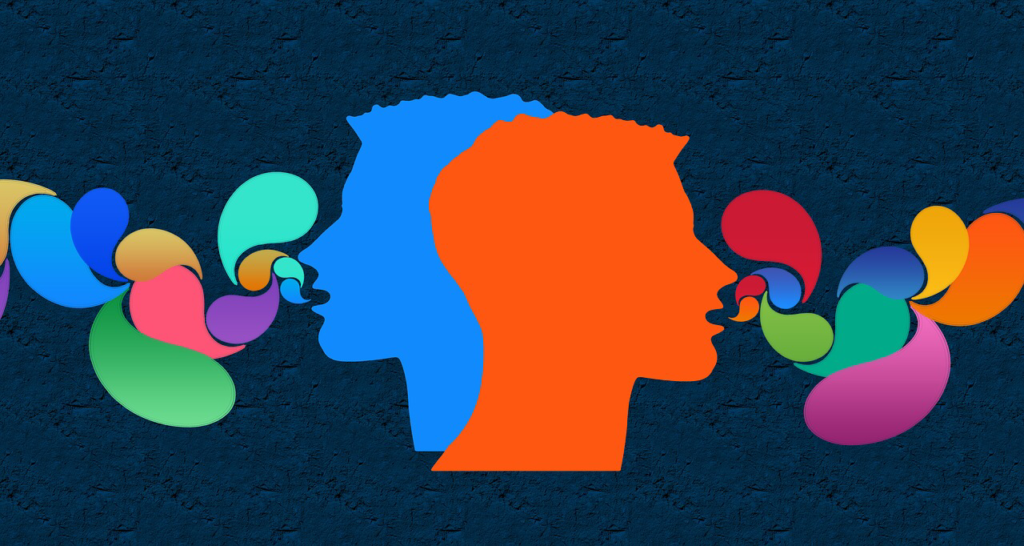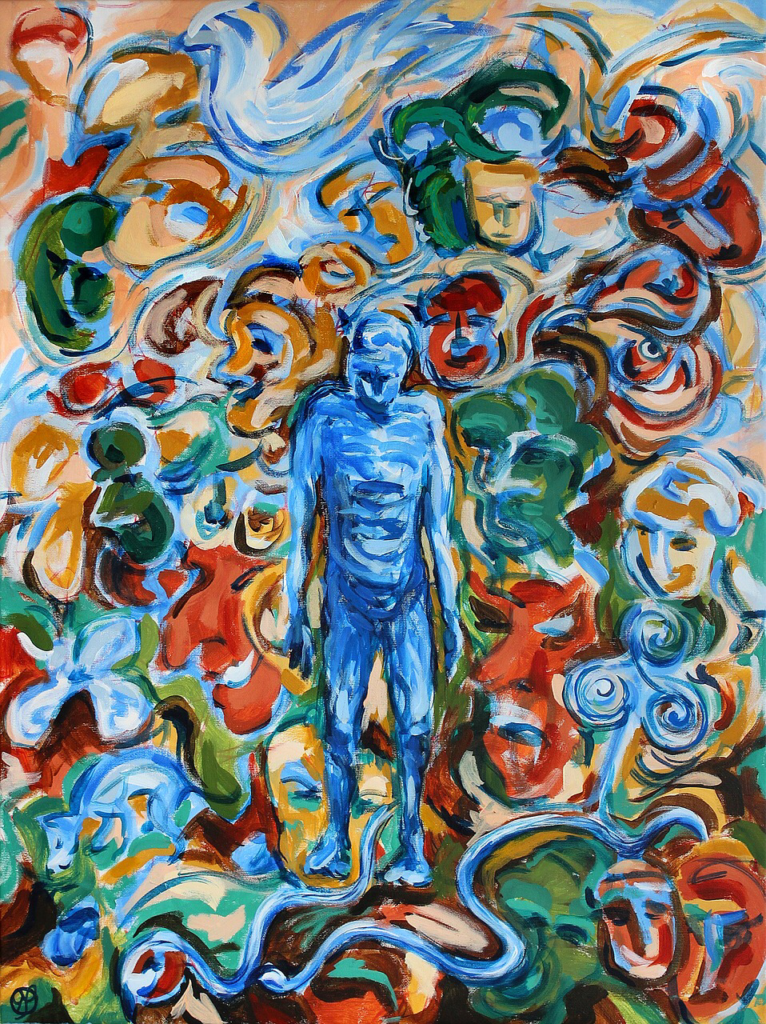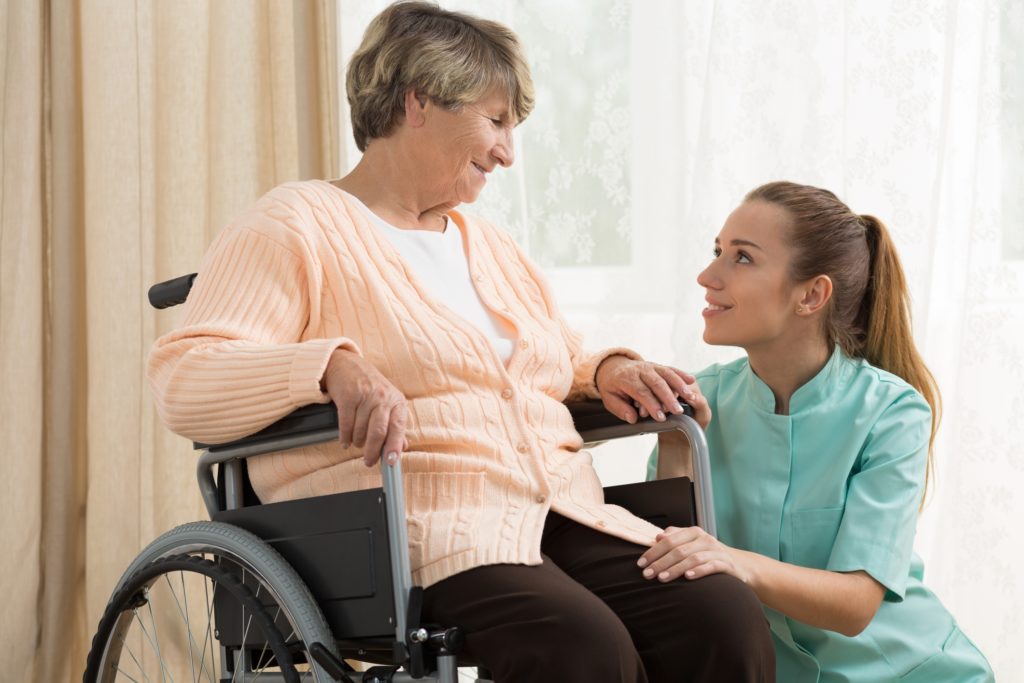“Help me!”, “Pomogi mne!”, “Tazorli”!, “Helf mikh!”. This universal calling can be heard in every language. You may have heard someone who has Alzheimer’s disease or Dementia repeatedly call out, or become tearful and cry frequently. Or, perhaps she or he suddenly has a screaming episode and you don’t know how to help them. This can be very distressing to experience, for both the person with Dementia and those around him or her. It can also cause frustration for caregivers when it seems like the person may be crying out for no apparent reason.

Calling behavior
People with brain damage, such as with Dementia or after a stroke, sometimes start to make long-term and frequent calls. Especially in institutions, there are elderly people who often shout so loudly that it is seen as a serious burden. For whom is this seen as a problem? The patient, family members, other residents or professional staff?
Research has shown that the repeated calling behavior is considerably more common in nursing homes than in care homes. It is estimated that in nursing homes 25 to 35% of the residents sometimes make aimless noises, including cries.
This is especially the case in departments of a nursing home where only the elderly live who need 24-hour care and suffer from severe Dementia.
Triggers for Crying and Calling Out in Dementia
Behavior such as aggression, agitation, apathy, calling behavior, walking urge and anxiety/depression are common among clients with Dementia in the nursing home and are often not understood. The treatment usually consists of psychotropic drugs. The effect of misunderstood behavior on staff is often large.
A few possible reasons why someone with Dementia is displaying a calling behavior include:
- Physical causes such as pain, restlessness, hunger or a need to use the bathroom
- External causes, including an environment that is too busy or loud, and a change in routine
- Psychological causes such as loneliness, boredom, anxiety, depression, and delusions
Crying and calling out in Dementia
Can be triggered by distress as a result of feelings of loss and being overwhelmed. At other times, crying appears to be less of a sorrowful response and more of habitual behavior.
Crying and calling out is sometimes more common in other types of Dementia including Vascular Dementia, Fronto Temporal Dementia, and Lewy body Dementia.
These behaviors may also increase later in the day due to Sundowning, a condition common in Dementia where behaviors and emotions escalate toward the evening.
Someone with Dementia may have a period when he or she is screaming out loud they can’t tell you why. They may be feeling anxious or fearful or be experiencing hallucinations or paranoia.
The most common types of problem behavior with Dementia
Agitation: inner restlessness leading to inefficient behavior, with a strong repetitive character.
- Motor agitation: walking around continuously, being unable to sit or lie still, rattling at doors, tapping on the table, turning everything upside down.
- Verbal agitation: continuous talking, mumbling.
- Vocal agitation: whimpering, shouting, calling, singing, making (stereotyped) sounds.
Aggression: violent behavior.
- Verbal aggression: swearing, cursing, accusing, threatening.
- Acting aggression: hitting, pushing, kicking, vandalizing, throwing objects, making threatening gestures, auto-mutilation.
Negativism:
Targeted defense or resistance, opposing care (situational), rejecting (all) help, refusing medication and food, always complaining, not being satisfied with anything, always being critical.
Reversal of the day and night rhythm:
Sleeping problem or agitation during evening and night in combination with excessive sleepiness, drowsiness, apathy or initiativelessness during the day.
Claiming behavior:
Requesting attention and help in such a way that this leads to irritation among care providers.
Irritability:
Very angry, irritated or displeased.
Inhibition: behavior characterized by hyperactivity and loss of control.
- Eating inhibition: greedy food, gluttony, eating while there is food.
- Sexual inhibition: sexual behavior, sexual harassment, making obscene gestures, always masturbating.
Roaming behavior:
Continuous (walking around) with a goal, always looking for or on the way to a certain place, person or activity.
Collective anger:
Collecting objects, carrying everything in a walker or hiding in a bag.
Loss of decorum:
Maladjusted, shameless behavior, undressing in public, walking around carelessly, peasants, letting go, urinating everywhere, foul language, tampering with food.
Apathy:
Unconventional behavior, not motivating activities, not expressing emotions.
Excessive crying or laughing:
Spontaneous crying or laughing after little emotion that often passes into each other.

How to Help the Person with Dementia
There are times there’s no reason for the person with Dementia to call out or cry. At least none that you can determine. Sometimes, people seem to “get stuck” in their behavior without a reason.
However, before you write off crying or calling out as a meaningless behavior and think, “Well, that’s just the way he or she is,”. Take into consideration the following interventions to make sure you’re doing everything possible to help:
- Notice any time that the person is not calling out or crying. Observe the environment, time of day, if it’s after he just ate dinner or just received care, or if it’s when he is in his favorite activity. When it’s possible, recreate the situation that occurred when he or she was content.
- Assess him for depression and anxiety. Both calling out and crying can be symptoms of anxiety and depression in Dementia.
- Involve him or her in meaningful activities.
- Conduct an assessment to ensure he’s not in pain or discomfort.
- Ask the physician or pharmacist to review his or her list of medications. Sometimes, a particular medication or combination of medications can cause disorientation and distress.
- Don’t give up. Most of the time, the challenging behaviors that are present in Dementia do have meaning. It’s our job as family members and caregivers to continue to improve the quality of life for people with Dementia. Crying and calling out will usually improve with non-drug approaches or medications, or a combination of both.

Activities to Try
When you’re sure that the basic needs of the person with Dementia have been met and he or she continues to cry or call out, try some of these interactivities mentioned below, which may be comforting to them:
- Favorite music: Know what their music of choice is and turn it on for them. This can comfort and distract him or her.
- Pet therapy: A warm, fuzzy animal can provide many benefits to those around them.
- Interaction with children: Young children have a way of engaging the attention of many, including those living with Dementia.
- Fresh air: A change of scenery can brighten the day.
- Snack or drink: Sometimes, a tasty snack or drink can distract and provide comfort.
- Gentle, reassuring touch: Try holding their hand, rubbing their shoulder or brushing their hair. These touches, which are ones that convey love and concern instead of performing a necessary act such as helping get him or her dressed for the day, are important to their quality of life.
Misunderstood behaviors
Sometimes, our own stress may be impacting the person with Dementia by increasing their anxiety or stress. Preventing overload by taking a break for a few minutes is important for the well-being of both you and your loved one or patient.
Behavior such as aggression, agitation, apathy, calling behavior, walking urge and anxiety/depression are common among clients with Dementia in the nursing home and are often not understood.
The treatment usually consists of psychotropic drugs. The effect of misunderstood behaviors on staff is often large. This is reflected in, among other things, stress and increased absenteeism.
Most of the programs available to learn to deal with misunderstood behavior have not been sufficiently adapted to the work situation of care workers, according to previous studies.

How to handle this?
An important part of dealing with problem behavior is understanding where the behavior comes from. We are then operating in the field of psychology. In my opinion, it is essential for professionals in Dementia care to have some knowledge of this.
Important questions are: what is behavior and how does behavior arise? I consider a basic psychology course to be relevant.
The programs that are available to learn to deal with misunderstood behavior have not been sufficiently adapted to the work situations of care workers, according to previous studies.
What is problem behavior?
Problem behavior with Dementia can be defined in many different ways. A nice and commonly used definition of Problem Behavior: is all behavior of a person or patient who is experienced as difficult to handle, by himself and/or his environment that sustains the behavior.
This definition reflects on the fact that the behavior can be a problem for the patient or his environment. The cause of the behavior can sometimes be found with the patient, but sometimes it is the environment that sustains the behavior.
Assess the problem behavior
Who is it a problem for? The answer to this question gives direction to finding a solution: aimed at the patient or his environment or both. There may just be deviant behavior, because it is not really a problem for anyone.
In most cases, however, problem behavior is a problem and, in many cases, problem behavior is often a reason for admission to the nursing home.
Problem behavior can take many different forms. (see previously mentioned)
Issue
Because health care workers are insufficiently equipped in practice to deal with misunderstood behavior, this has a major impact on the quality of life of the client but also has a negative impact on staff. More use is made of psychotropic drugs with harmful side effects as a result.
Method
Three factors determine what Health care workers need when dealing with misunderstood behavior are:
- Client factors, such as limited cognitive abilities or physical resistance.
- Employee factors, such as motivation, personal emotions, personal balance and knowledge, and skills.
- Environmental factors, among other things, how the organization deals with misunderstood behavior and factors such as the changing and more complex client population.

Conclusions and implications
To be able to provide personal care, a care worker needs a number of intrinsic factors such as:
- Motivation
- Persuasion
- The sense of responsibility, and
- The will to learn.
The knowledge must be offered on the department with practical tools. A personal balance between work and private life certainly also deserves attention.
The need for support differs between care workers and can be provided by colleagues and/or managers. And of course, the role that time, physical spaces and good cooperation play in person-oriented care.
But above all family participation is an aspect that Healthcare should never forget. The patient was once entrusted to you as care worker by their partner, son or daughter.

When you need more information or tips don’t hesitate to contact us.
